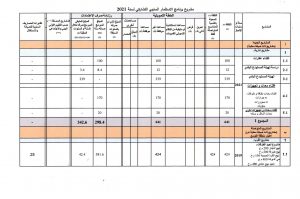
Once the remaining years are populated with the stated numbers, we can calculate the change in NWC across the entire forecast. We’ll now move on to a modeling change in net working capital exercise, which you can access by filling out the form below. Likewise, the change should be positive (“cash inflow”) if the NWC is declining year-over-year.
It, therefore, presents that part of current assets that are financed using permanent capital like equity capital, bank loans, etc. Managing current assets is similar to managing the fixed assets of your business. This is because you analyse the impact of current assets and fixed assets on the risk and return of your business. There are three important ways in which your current asset management differs from fixed assets management.
Net working capital and working capital ratio example
It encompasses current assets such as cash, inventory, and accounts receivable, minus current liabilities like accounts payable and short-term debt. Changes in working capital reflect the fluctuations in a company’s short-term assets and liabilities over a specific period. Working capital—otherwise known as net working capital (NWC)—is the difference between an organizationʻs current assets and current liabilities. Net working capital measures a company’s short-term financial health; this helps companies understand their current financial situation. NWC estimates are formulated from an inventory of assets and liabilities on a corporate balance sheet. It’s a commonly used measurement to gauge the short-term health of an organization.
Your business must maintain a sound Net Working Capital to run its business operations. Both excessive and inadequate Net Working Capital positions impact your business. Besides the above ratio, you can also use another ratio that compares the Net Working Capital of your business to its total assets. However, a high Net Working Capital Ratio does not mandatorily mean that your business is efficient in managing its short-term finances. It may also mean that your business is holding excess idle cash that could be reinvested into your business itself.
All businesses should know what their working capital is
The formula to calculate the working capital ratio divides a company’s current assets by its current liabilities. In financial accounting, working capital is a specific subset of balance sheet items, and calculated by subtracting current liabilities from current assets. If a company uses its cash to pay for a new vehicle or to expand one of its buildings, the company’s current assets will decrease with no change to current liabilities. A positive NWC occurs when a businessʻs current assets outweigh current liabilities. However, if you calculate your organizationʻs net working capital and your company’s current assets do not exceed current liabilities, your company could risk bankruptcy.
 العربية
العربية


